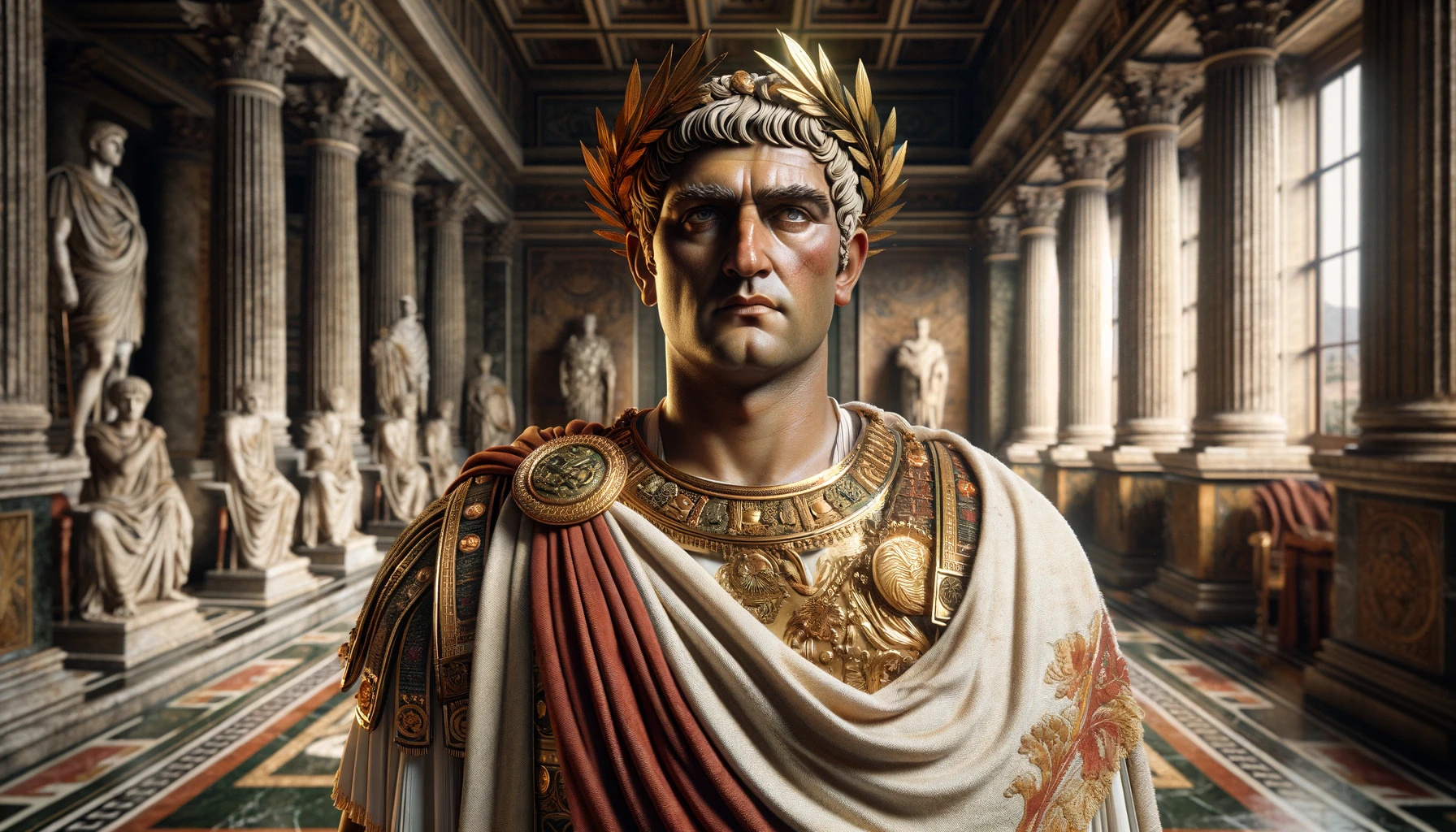In 306, Emperor Constantius, despite his ailing health, led an army back to Britain with the intent of launching a campaign into the northern regions. The province’s defences had been reinforced in the years prior. Although there is limited archaeological evidence and only fragmented historical records of his campaign, these sources hint that he advanced to the far north of Britain and achieved a significant victory in the early summer before he headed south. During this time, his son Constantine, who would later be known as Constantine the Great, spent a year in northern Britain, joining his father in military actions against the Picts beyond Hadrian’s Wall.
Constantius’ life came to an end in York in July of the same year, with Constantine at his side. Following the death of his father in 306, Constantine was hailed as Augustus, or emperor, by his troops in Eboracum (now known as York, England). This marked the beginning of his ascent to power. Over the ensuing years, Constantine engaged in civil wars against rival emperors Maxentius and Licinius. His victories in these conflicts solidified his position, and by 324, Constantine had emerged as the sole ruler of the Roman Empire, a significant consolidation of power in a period marked by political fragmentation and turmoil.
Known for his investment in construction, Constantine significantly contributed to building and enhancing both military and civil infrastructure. This commitment was evident in York, where he initiated extensive rebuilding early in his reign. Remarkably, within his first year of governance, his name was inscribed on six of nineteen milestones.
Constantine was a proactive leader, often visiting his provinces. Records indicate he stayed in Britain in 307, 312, and 314, a fact corroborated by coinage from those periods. Unlike the European provinces, Britain was relatively stable, providing more resources for development. Consequently, urban fortifications were strengthened, and walls were erected around previously open towns. This financial influx wasn’t limited to military structures; it also enhanced the homes of local landowners, some of which were upgraded to mansions.
Another notable change during this period was the reduction of troops in the forts, likely due to the soldiers being permitted to live among civilians, outside the camp boundaries. Many soldiers had married local women, and this policy allowed them to spend more time with their families. This shift also indicates a period of considerable peace in Britain at the time.
Constantine’s Military Reforms
Constantine’s tenure in Britain involved more than just construction initiatives. He boldly dissolved the praetorian guard and created new military ranks, ‘Master of cavalry’ and ‘Master of infantry’. His practice of recruiting foreign, particularly German, soldiers into the army and promoting them faced criticism for potentially weakening the Roman military with less reliable forces. There were concerns about these recruits’ loyalties in case of conflict with European tribes. The Roman tradition of internal promotion across ranks and races had led to numerous non-Roman leaders, raising suspicions of potential dangers. Constantine also blurred the lines between civil and military roles, with many civil positions adopting military titles and uniforms.
These military restructuring efforts appeared politically motivated. The praetorian prefects, responsible for military administration and recruitment, had an increased and influential workload under Constantine. Most sided with Maximus, who opposed Constantine’s policies.
Constantine’s Economic Reforms
In the economic realm, Constantine’s reforms were significant. Inflation, long part of Roman life, led to changes in tax calculation methods. Diocletian’s land-based taxation system, which allowed for more accurate government revenue predictions, was introduced. A ground-breaking shift was the acceptance of tax payments in kind, streamlining the provision of goods to the state, especially benefiting the army.
These reforms, while stabilizing the economy, also introduced complexities in administration and tax collection, leading to increased costs. To manage this, the finance department was divided to handle cash and in-kind payments, with local praetorian prefects overseeing the new system. This centralized approach aimed to reduce corruption prevalent in the previous tax collection system.
Constantine’s zeal for change extended to daily life and religion. Although not a Christian himself, he permitted Christianity’s growth in Britain, returning property to the church and financially supporting it, even aiding Eastern European churches in 324.
However, his favoritism and potential diversion of wealth raised suspicions. His transfer of legal powers from magistrates to church bishops was controversial and short-lived, reflecting his radical approach to reform. Despite Christianity’s growing acceptance, there was still significant resistance, especially from traditionalist Romans who valued pagan rituals and saw the rapid rise of Christianity as threatening.
Constantine’s Religious Reforms
Constantine publicly embraced Christianity, recognizing its increasing importance in civilian and political life. To appease resistant Roman elites, he restructured the chain of command, elevating positions like provincial governors to potential senatorial status, sometimes using wealth from warfare spoils and taxation to qualify them for the Senate. Accusations of favouritism were overlooked if they served his agenda.
His reforms impacted the economy, necessitating a new gold coin, the solidus, and increasing bureaucracy, which boosted employment. Despite this prosperity, tax disparities emerged, favoring the wealthy and burdening the less affluent, forcing Constantine to intervene with financial laws.
Constantine’s rule, marked by authoritarian control, significantly enhanced Britain’s prosperity. As an emperor trained in military tactics, he adeptly managed peaceful invasions and economic challenges, earning the title ‘Constantine the Great’ upon his death in 337.
